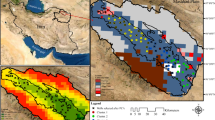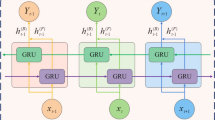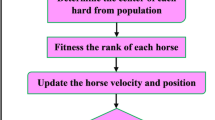Abstract
Accurate prediction of the groundwater level (GWL) is crucial for sustainable groundwater resource management. Ecological water replenishment (EWR) involves artificially diverting water to replenish the ecological flow and water resources of both surface water and groundwater within the basin. However, fluctuations in GWLs during the EWR process exhibit high nonlinearity and complexity in their time series, making it challenging for single data-driven models to predict the trend of groundwater level changes under the backdrop of EWR. This study introduced a new GWL prediction strategy based on a hybrid deep learning model, STL-IWOA-GRU. It integrated the LOESS-based seasonal trend decomposition algorithm (STL), improved whale optimization algorithm (IWOA), and Gated recurrent unit (GRU). The aim was to accurately predict GWLs in the context of EWR. This study gathered GWL, precipitation, and surface runoff data from 21 monitoring wells in the Yongding River Basin (Beijing Section) over a period of 731 days. The research results demonstrate that the improvement strategy implemented for the IWOA enhances the convergence speed and global search capabilities of the algorithm. In the case analysis, evaluation metrics including the root mean square error (RMSE), mean absolute error (MAE), mean absolute percentage error (MAPE), and Nash–Sutcliffe efficiency (NSE) were employed. STL-IWOA-GRU exhibited commendable performance, with MAE achieving the best result, averaging at 0.266. When compared to other models such as Variance Mode Decomposition-Gated Recurrent Unit (VMD-GRU), Ant Lion Optimizer-Support Vector Machine (ALO-SVM), STL-Particle Swarm Optimization-GRU (STL-PSO-GRU), and STL-Sine Cosine Algorithm-GRU (STL-SCA-GRU), MAE was reduced by 18%, 26%, 11%, and 29%, respectively. This indicates that the model proposed in this study exhibited high prediction accuracy and robust versatility, making it a potent strategic choice for forecasting GWL changes in the context of EWR.






Similar content being viewed by others
Data Availability
The datasets used and/or analyzed during the current study are available from the corresponding author on reasonable request.
Change history
26 March 2024
A Correction to this paper has been published: https://doi.org/10.1007/s11356-024-33057-8
References
Adnan RM, Dai HL, Mostafa RR, Islam AMT, Kisi O, Heddam S, Zounemat-Kermani M (2023): Modelling groundwater level fluctuations by ELM merged advanced metaheuristic algorithms using hydroclimatic data. Geocarto Int. 38 https://doi.org/10.1080/10106049.2022.2158951
Ao C, Zeng WZ, Wu LF, Qian L, Srivastava AK, Gaiser T (2021): Time-delayed machine learning models for estimating groundwater depth in the Hetao Irrigation District, China. Agric Water Manag 255 https://doi.org/10.1016/j.agwat.2021.107032
El Bilali A Taleb A Brouziyne Y (2021) Comparing four machine learning model performances in forecasting the alluvial aquifer level in a semi-arid region. J African Earth Sci 181 https://doi.org/10.1016/j.jafrearsci.2021.104244
Bradshaw JL, Luthy RG (2017) Modeling and optimization of recycled water systems to augment urban groundwater recharge through underutilized stormwater spreading basins. Environ Sci Technol 51:11809–11819. https://doi.org/10.1021/acs.est.7b02671
Cai H, Shi H, Liu S, Babovic V (2021) Impacts of regional characteristics on improving the accuracy of groundwater level prediction using machine learning: the case of central eastern continental United States. J Hydrol: Reg Stud 37:100930. https://doi.org/10.1016/j.ejrh.2021.100930
Chen Z, Huang J, Zhan H, Wang J, Dou Z, Zhang C, Chen C, Fu Y (2022) Optimization schemes for deep foundation pit dewatering under complicated hydrogeological conditions using MODFLOW-USG. Eng Geol 303:106653. https://doi.org/10.1016/j.enggeo.2022.106653
Cho K, Van Merrienboer B, Gulcehre C, Bahdanau D, Bougares F, Schwenk H, Bengio Y (2014): Learning phrase representations using RNN encoder-decoder for statistical machine translation. Comput Sci, arXiv:1406.1078. https://doi.org/10.48550/arXiv.1406.1078
Cleveland RB Cleveland WS (1990) STL: a seasonal-trend decomposition procedure based on loess. J Off Stat 6
Deng HJ, Liu LN, Fang JY, Qu BY, Huang QZ (2023) A novel improved whale optimization algorithm for optimization problems with multi-strategy and hybrid algorithm. Math Comput Simul 205:794–817. https://doi.org/10.1016/j.matcom.2022.10.023
El Moneam MA (2023) Review of artificial recharge prospects for augmentation of groundwater in Egypt: a case study of El Bustan extension area. Ain Shams Eng J 14:101995. https://doi.org/10.1016/j.asej.2022.101995
Fallahi MM, Shabanlou S, Rajabi A, Yosefvand F, IzadBakhsh MA (2023): Effects of climate change on groundwater level variations affected by uncertainty (case study: Razan aquifer). Appl Water Sci 13 https://doi.org/10.1007/s13201-023-01949-8
Fournier ED, Keller AA, Geyer R, Frew J (2016) Investigating the energy-water usage efficiency of the reuse of treated municipal wastewater for artificial groundwater recharge. Environ Sci Technol 50:2044–2053. https://doi.org/10.1021/acs.est.5b04465
Gharehbaghi A, Ghasemlounia R, Ahmadi F, Albaji M (2022) Groundwater level prediction with meteorologically sensitive Gated Recurrent Unit (GRU) neural networks. J Hydrol 612:128262. https://doi.org/10.1016/j.jhydrol.2022.128262
Hua ZY, Zhou YC, Huang HJ (2019) Cosine-transform-based chaotic system for image encryption. Inf Sci 480:403–419. https://doi.org/10.1016/j.ins.2018.12.048
Iacca G, dos Santos VC, de Melo VV (2021): An improved Jaya optimization algorithm with Levy flight. Expert Syst Appl 165 https://doi.org/10.1016/j.eswa.2020.113902
Jensi R, Jiji GW (2016) An enhanced particle swarm optimization with levy flight for global optimization. Appl Soft Comput 43:248–261. https://doi.org/10.1016/j.asoc.2016.02.018
Kardan Moghaddam H, Ghordoyee Milan S, Kayhomayoon Z, Rahimzadeh Kivi Z, Arya Azar N (2021) The prediction of aquifer groundwater level based on spatial clustering approach using machine learning. Environ Monit Assess 193:173. https://doi.org/10.1007/s10661-021-08961-y
Khan AT, Khan AR, Li S, Bakhsh S, Mehmood A, Zaib J (2021) Optimally configured gated recurrent unit using hyperband for the long-term forecasting of photovoltaic plant. Renew Energy Focus 39:49–58. https://doi.org/10.1016/j.ref.2021.07.002
Khozani ZS Banadkooki FB Ehteram M Ahmed AN El-Shafie A (2022) Combining autoregressive integrated moving average with long short-term memory neural network and optimisation algorithms for predicting ground water level. J Cleaner Prod 348.https://doi.org/10.1016/j.jclepro.2022.131224
Kumar D, Roshni T, Singh A, Jha MK, Samui P (2020) Predicting groundwater depth fluctuations using deep learning, extreme learning machine and Gaussian process: a comparative study. Earth Sci Inf 13:1237–1250. https://doi.org/10.1007/s12145-020-00508-y
Kursa MB, Jankowski A, Rudnicki WR (2010) Boruta – A System for Feature Selection. Fund Inform 101:271–285. https://doi.org/10.3233/FI-2010-288
Latif SD, Ahmed AN (2023) A review of deep learning and machine learning techniques for hydrological inflow forecasting. Environ Dev Sustain 25:12189–12216. https://doi.org/10.1007/s10668-023-03131-1
Li W, Jiang X (2023) Prediction of air pollutant concentrations based on TCN-BiLSTM-DMAttention with STL decomposition. Sci Rep 13:4665. https://doi.org/10.1038/s41598-023-31569-w
Li Y, Cao S, Yu L, Yao J, Lu J (2023) Quantifying the impacts of a proposed hydraulic dam on groundwater flow behaviors and its eco-environmental implications in the large Poyang Lake-floodplain system. J Environ Manage 336:117654. https://doi.org/10.1016/j.jenvman.2023.117654
Lin H, Gharehbaghi A, Zhang Q, Band SS, Pai HT, Chau K-W, Mosavi A (2022) Time series-based groundwater level forecasting using gated recurrent unit deep neural networks. Eng Appl Computational Fluid Mech 16:1655–1672. https://doi.org/10.1080/19942060.2022.2104928
Masrur Ahmed AA, Deo RC, Feng Q, Ghahramani A, Raj N, Yin Z, Yang L (2021) Deep learning hybrid model with Boruta-Random forest optimiser algorithm for streamflow forecasting with climate mode indices, rainfall, and periodicity. J Hydrol 599:126350. https://doi.org/10.1016/j.jhydrol.2021.126350
Mirjalili S, Lewis A (2016) The whale optimization algorithm. Adv Eng Softw 95:51–67. https://doi.org/10.1016/j.advengsoft.2016.01.008
Mirzania E, Ghorbani MA, Asadi E (2023) Enhancement groundwater level prediction using hybrid ANN-HHO model: case study (Shabestar Plain in Iran). Arab J Geosci 16:464. https://doi.org/10.1007/s12517-023-11584-x
Mozaffari S, Javadi S, Moghaddam HK, Randhir TO (2022) Forecasting groundwater levels using a hybrid of support vector regression and particle swarm optimization. Water Resour Manage 36:1955–1972. https://doi.org/10.1007/s11269-022-03118-z
Nan T, Cao W, Wang Z, Gao Y, Zhao L, Sun X, Na J (2023) Evaluation of shallow groundwater dynamics after water supplement in North China Plain based on attention-GRU model. J Hydrol 625:130085. https://doi.org/10.1016/j.jhydrol.2023.130085
Peng T Zhang C Zhou JZ Nazir MS (2021) An integrated framework of Bi-directional long-short term memory (BiLSTM) based on sine cosine algorithm for hourly solar radiation forecasting. Energy 221 https://doi.org/10.1016/j.energy.2021.119887
Pointet T (2022) The United Nations World Water Development Report 2022 on groundwater, a synthesis. LHB 108:2090867. https://doi.org/10.1080/27678490.2022.2090867
Samantaray S, Sahoo A, Satapathy DP (2022) Prediction of groundwater-level using novel SVM-ALO, SVM-FOA, and SVM-FFA algorithms at Purba-Medinipur India. Arab J Geosci 15:723. https://doi.org/10.1007/s12517-022-09900-y
Shi BW Li XX Hu WW Xi BD Liu SR Liu D Xu CC Jia ZH Li R (2023) Environmental risk of tailings pond leachate pollution: traceable strategy for leakage channel and influence range of leachate. J Environ Manage 331 https://doi.org/10.1016/j.jenvman.2023.117341
Shuai G, Zhou Y, Shao J, Cui Y, Zhang Q, Jin C, Xu S (2024) Comparison of multiple machine learning methods for correcting groundwater levels predicted by physics-based models. Sustainability. https://doi.org/10.3390/su16020653
Sun K, Hu L, Guo J, Yang Z, Zhai Y, Zhang S (2021) Enhancing the understanding of hydrological responses induced by ecological water replenishment using improved machine learning models: a case study in Yongding River. Sci Total Environ 768:145489. https://doi.org/10.1016/j.scitotenv.2021.145489
Sun K, Hu L, Sun J, Zhai Y, Zhang S, Cao X (2023) Quantifying the contribution of ecological water replenishment on aquifer recovery using a refined groundwater model. Sci Total Environ 857:159216. https://doi.org/10.1016/j.scitotenv.2022.159216
Tanyildizi E, Demir G (2017) Golden sine algorithm: a novel math-inspired algorithm. Adv Electr Comput Eng 17:71–78. https://doi.org/10.4316/AECE.2017.02010
Tebong NK, Simo T, Takougang AN, Ntanguen PH (2023) STL-decomposition ensemble deep learning models for daily reservoir inflow forecast for hydroelectricity production. Heliyon 9:e16456. https://doi.org/10.1016/j.heliyon.2023.e16456
Tian YJ, Zhou SJ, Wen M, Li JG (2021) A short-term electricity forecasting scheme based on combined GRU model with STL decomposition. IOP Conf Ser Earth and Environ Sci 701:012008. https://doi.org/10.1088/1755-1315/701/1/012008
Vu T-D, Ni C-F, Li W-C, Truong M-H, Hsu SM (2021) Predictions of groundwater vulnerability and sustainability by an integrated index-overlay method and physical-based numerical model. J Hydrol 596:126082. https://doi.org/10.1016/j.jhydrol.2021.126082
Wang Y, Yu XB, Yang L, Li J, Zhang J, Liu YL, Sun YJ, Yan F (2022) Research on Load Optimal Dispatch for High-Temperature CHP Plants through Grey Wolf Optimization Algorithm with the Levy Flight. Processes 10(8):1546. https://doi.org/10.3390/pr10081546
Wu Q, Liu Y, Zhou W, Li B, Zhao B, Liu S, Sun W, Zeng Y (2015) Evaluation of water inrush vulnerability from aquifers overlying coal seams in the Menkeqing Coal Mine, China. Mine Water Environ 34:258–269. https://doi.org/10.1007/s10230-014-0313-5
Yan Z, Zhou Z, Sang X, Wang H (2018) Water replenishment for ecological flow with an improved water resources allocation model. Sci Total Environ 643:1152–1165. https://doi.org/10.1016/j.scitotenv.2018.06.085
Yang S, Deng Z, Li X, Zheng C, Xi L, Zhuang J, Zhang Z, Zhang Z (2021) A novel hybrid model based on STL decomposition and one-dimensional convolutional neural networks with positional encoding for significant wave height forecast. Renewable Energy 173:531–543. https://doi.org/10.1016/j.renene.2021.04.010
Yin J, Medellín-Azuara J, Escriva-Bou A, Liu Z (2021a) Bayesian machine learning ensemble approach to quantify model uncertainty in predicting groundwater storage change. Sci Total Environ 769:144715. https://doi.org/10.1016/j.scitotenv.2020.144715
Yin W, Fan Z, Tangdamrongsub N, Hu L, Zhang M (2021b) Comparison of physical and data-driven models to forecast groundwater level changes with the inclusion of GRACE–a case study over the state of Victoria Australia. J Hydrol 602:126735. https://doi.org/10.1016/j.jhydrol.2021.126735
Zammouri M, Brini N (2020) Efficiency of artificial groundwater recharge, quantification through conceptual modelling. Water Resour Manage 34:3345–3361. https://doi.org/10.1007/s11269-020-02617-1
Zhang J, Wang JS (2020) Improved Salp swarm algorithm based on Levy flight and sine cosine operator. IEEE Access 8:99740–99771. https://doi.org/10.1109/ACCESS.2020.2997783
Zhang JF, Zhu Y, Zhang XP, Ye M, Yang JZ (2018) Developing a long short-term memory (LSTM) based model for predicting water table depth in agricultural areas. J Hydrol 561:918–929. https://doi.org/10.1016/j.jhydrol.2018.04.065
Zhang C, Ji C, Hua L, Ma H, Nazir MS, Peng T (2022a) Evolutionary quantile regression gated recurrent unit network based on variational mode decomposition, improved whale optimization algorithm for probabilistic short-term wind speed prediction. Renewable Energy 197:668–682. https://doi.org/10.1016/j.renene.2022.07.123
Zhang X, Zhao D, Duan B, Qiao W (2022b) A novel groundwater burial depth prediction model—based on the combined VMD-WSD-ELMAN model. Environ Sci Pollut Res 29:76310–76320. https://doi.org/10.1007/s11356-022-21209-7
Zhao L, Luo T, Jiang X, Zhang B (2023) Prediction of soil moisture using BiGRU-LSTM model with STL decomposition in Qinghai-Tibet Plateau. PeerJ 11:e15851. https://doi.org/10.7717/peerj.15851
Funding
This study was supported by the Beijing Municipal Science and Technology Project (Z191100006919001) and the National Key Research and Development Program of China (SQ2022YFC3700182).
Author information
Authors and Affiliations
Contributions
All authors contributed to the study conception and design. Zihao Jia: conceptualization, methodology, software, investigation, data curation, writing—original draft preparation. Qin Zhang: conceptualization, methodology, validation, visualization, writing—original draft preparation. Bowen Shi: visualization, writing—reviewing and editing. Congchao Xu: validation, writing—reviewing and editing. Di Liu: visualization. Yihong Yang: visualization. Beidou Xi: validation, writing—review and editing. Rui Li: resources, writing—review and editing.
Corresponding author
Ethics declarations
Ethical approval
Not applicable.
Consent to participate
Not applicable.
Consent for publication
Not applicable.
Competing interests
The authors declare no competing interests.
Additional information
Responsible Editor: Marcus Schulz
Publisher's Note
Springer Nature remains neutral with regard to jurisdictional claims in published maps and institutional affiliations.
Supplementary Information
Below is the link to the electronic supplementary material.
Rights and permissions
Springer Nature or its licensor (e.g. a society or other partner) holds exclusive rights to this article under a publishing agreement with the author(s) or other rightsholder(s); author self-archiving of the accepted manuscript version of this article is solely governed by the terms of such publishing agreement and applicable law.
About this article
Cite this article
Jia, Z., Zhang, Q., Shi, B. et al. A new strategy for groundwater level prediction using a hybrid deep learning model under Ecological Water Replenishment. Environ Sci Pollut Res 31, 23951–23967 (2024). https://doi.org/10.1007/s11356-024-32330-0
Received:
Accepted:
Published:
Issue Date:
DOI: https://doi.org/10.1007/s11356-024-32330-0




